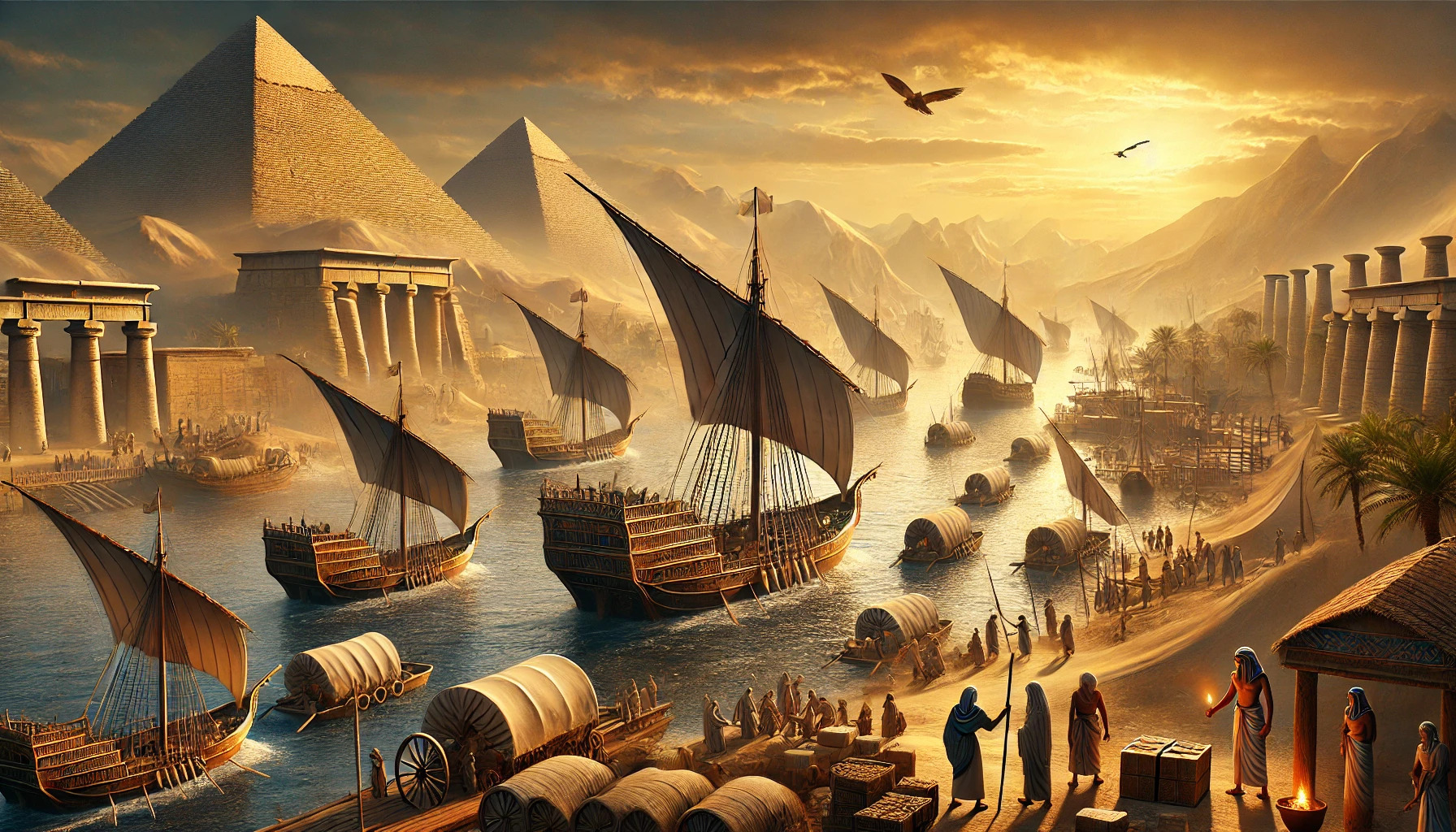Seafaring played a significant role in ancient Egyptian civilization, offering insights into their technology and trade practices. Ancient Egyptians not only navigated the Nile but also ventured into the Red Sea and beyond, expanding their connections and influence. This adventurous spirit laid the groundwork for cultural exchanges with distant lands, showcasing their shipbuilding skills and maritime knowledge.
Exploring the waters beyond the Nile opens a window into a fascinating aspect of Egypt’s history. From the rich archaeological findings of shipwrecks to ancient ports, the evidence shows that Egyptians were skilled seafarers who utilized their unique boats for trade and exploration. This journey reveals how the interplay between river and sea shaped their economy and culture.
The story of ancient Egyptian seafaring is vibrant and complex, reflecting a society that embraced both the familiar banks of the Nile and the wider world beyond. By understanding their maritime activities, one can better appreciate the sophisticated nature of this ancient civilization.
Navigating the Nile: The Lifeline of Ancient Egypt
The Nile River was essential to ancient Egyptian life, shaping their society and culture. It served not only as a means of transport but also played a significant role in their rituals and daily activities.
Boatbuilding and Ship Design
Ancient Egyptians were skilled boat builders, creating vessels that were well-suited for the Nile. They used materials like papyrus and wood to construct a variety of boats. Papyrus boats were lightweight and easy to navigate, while wooden ships provided more durability for longer journeys.
Different types of vessels were designed for specific purposes. For example, rowboats were used for short trips, while sailboats harnessed the wind for longer travels. Large barges transported goods and people, making trade possible along the river.
Boat design often included features for stability and speed. Egyptians implemented a flat bottom design to easily maneuver through shallow waters. These innovations made the Nile a reliable highway for the movement of goods and cultural exchange.
Rituals and Religion in River Travel
Traveling on the Nile also had deep spiritual meaning for the ancient Egyptians. The river was thought to be a divine gift, and many rituals were linked to it. For instance, before a significant journey, priests conducted ceremonies to appease the river gods.
Boats used for religious purposes were often elaborately decorated. The burial tombs contained models of boats, symbolizing the journey to the afterlife. These representations showed how vital the Nile was in their belief system.
Furthermore, the annual flooding of the Nile was celebrated. It represented renewal and the joy of harvests. Festivals marked this time, where communities gathered, reflecting their close ties to the river’s cycles and bounty.
Seafaring and Trade Expeditions
Seafaring played a crucial role in ancient Egyptian trade, connecting them with distant lands. This section explores the intricate trade networks and the navigational techniques that made these expeditions successful.
Trade Networks and Exchange
Ancient Egyptians established extensive trade networks across the Mediterranean and Red Seas. They sought valuable resources like gold, silver, and exotic goods from regions such as Punt.
Merchants used a variety of vessels designed for both river and sea travel, adapting to different environments. Trading missions often involved large crews to handle the demands of long voyages.
These interactions facilitated cultural exchange, introducing new technologies and goods. For instance, the introduction of cedar wood from Lebanon was vital for ship construction.
The harbors, such as the one built during the reign of Pharaoh Khufu, were key sites for managing such trade activities. They served as launching points for expeditions and hubs for goods.
Navigational Techniques and Maritime Knowledge
Navigational skills were essential for successful voyages. Ancient Egyptians relied on the stars for guidance. They noted the positions of celestial bodies to chart their courses.
They also utilized knowledge of winds and currents. Such understanding made it easier to navigate the often unpredictable waters of the sea.
Technological advancements in shipbuilding, including the development of sailboats, greatly improved their seafaring capabilities. The design of these vessels mirrored the traditional Nile riverboats but was adapted for ocean travel.
Additionally, documentation found in hieroglyphics suggests a well-organized approach to expeditions. Maps and records showed routes to key trading partners, illustrating their advanced maritime knowledge.
Cultural and Military Maritime Endeavors
Ancient Egyptians had deep connections to the sea that influenced their culture and military strategies. Their maritime activities were infused with spiritual significance and reflected their desire for power and protection over their territory and trade routes.
Symbolism of Sea in Egyptian Culture
The sea held great symbolic value in ancient Egypt. It was often seen as a pathway to the afterlife. The Egyptians believed that the waters represented a journey beyond the physical world.
Ship burials were a notable practice, reflecting the belief that ships would carry the deceased into the afterlife. These burials included elaborate rituals to invoke divine favor.
Additionally, marine motifs appeared in art and architecture. They showcased reverence for the ocean’s power and mystery. This symbolism linked the sea not just to trade but also to spirituality and cultural identity.
Naval Warfare and Defense
The military use of seafaring was crucial for ancient Egypt. Naval expeditions allowed the Egyptians to defend their shores and expand their influence.
They built ships that were effective for combat and trade. These boats enabled them to engage in naval warfare against enemies. The Egyptians often used tactics that combined archery and boarding—making their maritime conflicts quite strategic.
Egypt’s naval power helped secure important trade routes. This control ensured the flow of goods and stability for their economy. Encounters with neighboring civilizations strengthened their military capabilities and expanded their territory.

